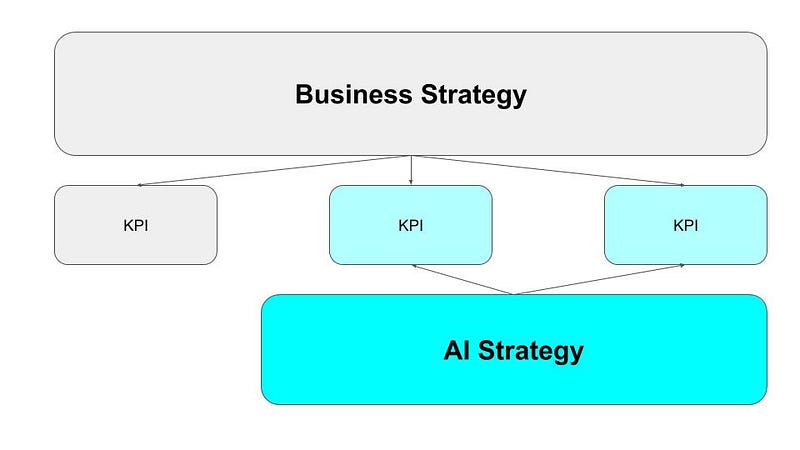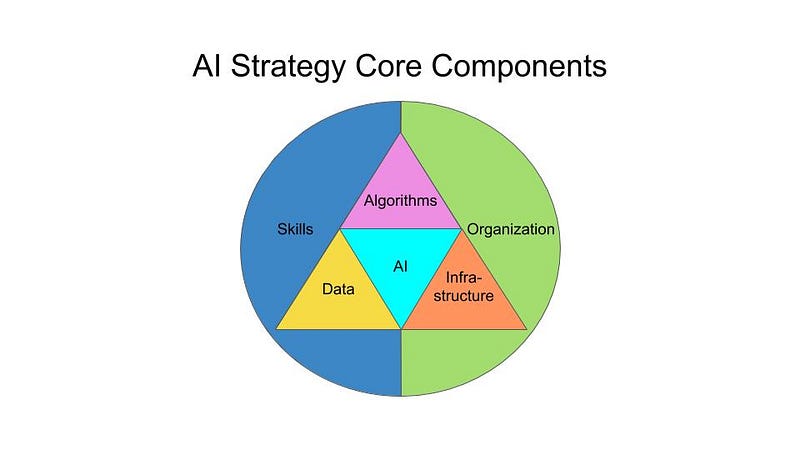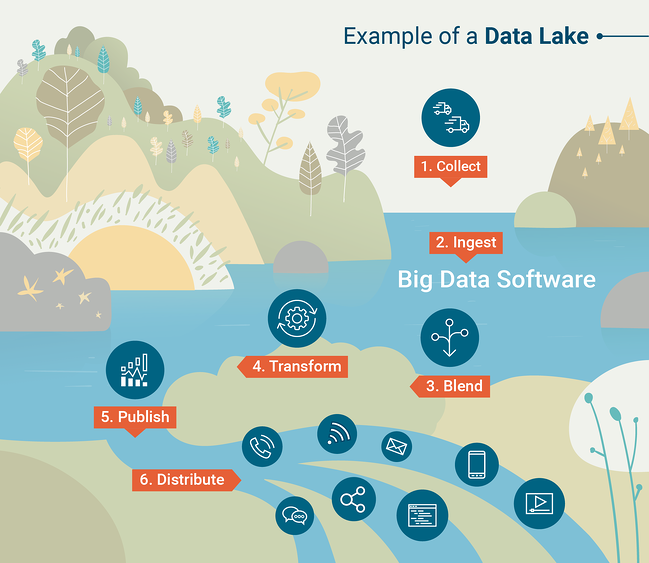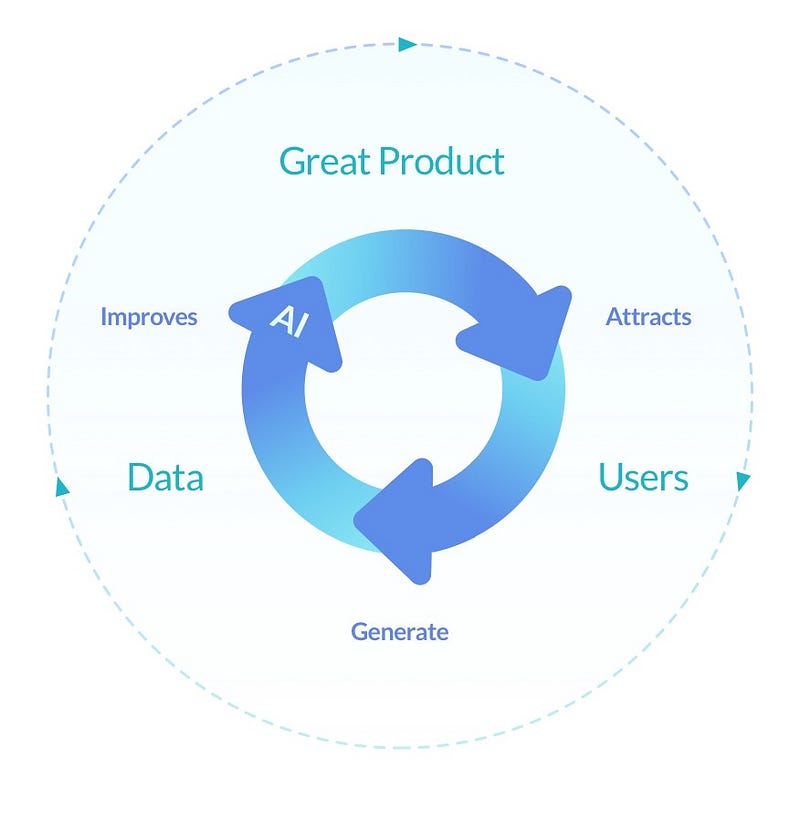While much is known about creating a business strategy, creating an AI Strategy is new territory. How do you approach creating your AI Strategy?
Artificial Intelligence holds vast promises across industries and sectors. Andrew Ng, the world’s foremost AI Evangelists, lists creating an AI Strategy as a key element in his AI Transformation Playbook. With AI set to transform every industry, how do you create a sensible strategy to harness its power? What exactly constitutes an AI Strategy? What are the differences in creating an AI Strategy for startups vs corporations?

Photo by JESHOOTS.COM on Unsplash
Modeling an AI Strategy is different from creating a traditional business strategy. This post aims to guide practitioners through the process of creating a targeted AI Strategy. The insights are based on my personal experience and expert interviews with global AI leaders from companies like Volkswagen, Google, AI Fund, and many more. By the end of the article, you will know how the AI Strategy relates to the business strategy, the core components of an AI Strategy, and how to separate a good from a bad AI Strategy.
Let’s start planning.
The Business Strategy and the AI Strategy
An AI Strategy exists to support the business strategy. The business strategy defines the road ahead for your company. Which initiatives will provide the highest business value? Which features separate the company from competitors? A business strategy is expressed through measurable goals, e.g. in the form of Key Performance Indicators (KPIs) or Objectives and Key Results (OKRs). These methods track the progress in achieving the business goals.

AI Strategy supports the business in achieving its KPIs.
Raphael Kohler, Vice-Chairman of the German Chinese Association of AI, states that it is crucial to have a good understanding of the goal of the AI Strategy. He emphasizes that the discussion cannot center on technology, but has to be driven by business value.
There is no one-size fits all for AI Strategy as for business strategy. — Dominik Haitz
The business aligns to fulfill these KPIs. The job of the AI Strategy is to provide a road to impact these business KPIs.
Opportunities and Challenges of AI
Balancing the capabilities and limitations of AI is key to understand how AI can support your business strategy.
You can’t expect to get anything useful by asking wizards to sprinkle machine learning magic on your business without some effort from you first. — Cassie Kozyrkov
Generally speaking, AI can do three things well: automate processes, create new products, or improve existing products. An example of automating processes is Robotic Process Automation, which frees employees from tedious, repetitive tasks. AI can also help companies generate completely new products, e.g. smart home speakers are powered by AI. Lastly, AI can also improve existing products. Credit decisions today are mostly supported by AI. The model crunches ever more information than humans could, thus lowering the overall credit costs for consumers.

Yet, AI struggles with complex tasks. These tasks could include context understanding or anything else that takes a human more than 1s to do. AI is very good at executing narrowly defined tasks and fares less well in uncertain environments.
Understanding the scope and boundaries of AI is paramount before planning your AI efforts.
Leverage AI to create an advantage specific to your industry sector. — Andrew Ng
Now that you understand how the AI Strategy relates to the business strategy and which opportunities and challenges exist, how do you approach creating one?
The Core Components of an AI Strategy
In the same way that every company was touched by electricity, every company will be touched by the power of AI. While no AI Strategy looks the same, all AI Strategies need to answer similar questions. The core components of any AI Strategy concern its holy trinity of Data, Infrastructure, Algorithms, surrounded by the pillars of Skills and Organization. Let’s dive into each component.

Data
Without data, there can be no AI. Data relates to all pieces of information that are relevant to improve your business. It can be anything from sensor data of self-driving cars to financial data for business decisions. Creating a Data Strategy is a vital part of any AI Strategy. Andrew Ng recommends touching on the following points:
- What data can you acquire strategically?
- Do you collect all or selected data?
Jason Risch, AI Investor at the AI Fund, stresses the importance of the right timing of strategic data acquisition. Drowning in data should not be an option anymore. Jason witnessed “select * “ data strategies fail at both startups and corporations. Startups that focus on creating models before building a viable product waste valuable resources. Similarly, corporations which acquire startups because of their plethora of data often fail to find value in it. This is a common fallacy in the health care industry, where companies hope that algorithms will find a pattern in random data. The key is to gather the *right* data.
Data has been the main source of company ascensions in the past decade. Data-driven decision making is key to success, so you need to define a strong data strategy. — Tarry Singh
After creating the data strategy, it is time to think about the infrastructure next.
Infrastructure
The second core component of the AI Strategy is infrastructure. Infrastructure relates to making the data accessible and offering the required computing power necessary to process the data. AI models are hungry for computing power, and your AI team needs the infrastructure to develop and deploy models. Ideally, this infrastructure is adjusted to your companies needs.
- Can you create a unified data warehouse?
- Do you use cloud services or on-premise solutions?
A unified data warehouse centralizes access to data available across the company. In traditional companies, you will find data hoarded in silos, unable to be accessed by other teams. This has often structural, organizational, and legal reasons. However, making connections across business-team specific data is at the center of your AI work. Data Scientists excel at finding patterns in data, so your goal is to give them access to as much data as possible.

The important question is if you rely on cloud services or build your own infrastructure for AI. Cloud vendors like AWS, Microsoft, or Google, offer AI solutions out-of-the-box. When using the cloud, you only pay for what you consume. Vast amounts of resources are also available to help you set up quickly. You also continually invest time and resources to maintain your servers. When buying your own hardware, you have higher upfront costs. Cloud solutions are cheaper to start with, but in the long-run, it can pay off to invest in your own infrastructure. Pros and cons depend on your industry, so it is important to figure out your needs before making a decision. Tarry Singh, CEO and Co-Founder at deepkapha.ai, does not recommend to solely focus on the cloud for companies that develop algorithms as a competitive advantage.
Once you know how to leverage hardware for AI, consider the algorithmic part of AI next.
Algorithms
Algorithms are atop of AI’s holy trinity because they use data and infrastructure to churn out valuable products. The algorithmic part of your AI Strategy is tricky. Answering these questions will get you further.
- Are proprietary algorithms a key driver of business value?
- Do you open-source your models or prefer to keep them proprietary?
Cassie Kozyrkov, Chief Decision Scientist at Google, reckons that two worlds of Machine Learning exist. Cassie likes to differentiate between Machine Learning Research and Applied Machine Learning. Conducting research requires a different approach than applying existing algorithms.
The AI community has become much better at releasing public data sets and models that can be reused. This provides a tremendous advantage to your company because you have access to the variety of the AI Model Zoo. The main question you should answer in your AI Strategy is if algorithms are the main business driver for AI functions. If yes, you should set up a patent program and incentivize employees to file for patents. If not, you should consider open-sourcing your models, leveraging crowd knowledge to improve your algorithms.
Next, let’s look at the skills needed to utilize AI in your company.
Skills
Once the holy trinity of AI is in place, you need people to fulfill its destiny. People are at the core of putting your data, infrastructure, and algorithms to work to generate business value. How do you empower the people in your organization to use AI? Answer the following questions in your AI Strategy:
- Do you build an in-house team or do you outsource tasks?
- How do you continually educate management and employees about AI?
Andrew Ng recommends building an in-house AI team. AI feeds off domain knowledge, and that can be hard to outsource in certain industries. Outside consultants likely don’t know your data, infrastructure, and problems as well as your own employees. Hence, the feasible way is to bundle enthusiastic employees and educate them about AI.

Photo by Tim Mossholder on Unsplash
Dominik Haitz, Data Scientist at 1&1 Ionos, states that AI as a novel technology differs from other tech innovations. People are often not only unaware of AI’s actual capabilities, but they frequently have misconceptions about it. This can range from ‘omnipotent threat to humanity’ to the notion of a multipurpose system that works straightforwardly out of the box.
Once the in-house team is in place, they need to act as an enabler. The promises of AI are too vast to encapsulate them in a single team. The AI Strategy should implement a program that continually educates all people to look for AI use-cases. Very often, these programs should target high-impact individuals who can invest in AI projects. Rachel Berryman, Co-Founder of todoku.ai, is convinced that AI understanding of managers is crucial, as it will trickle down as AI opportunities to employees in their line.
Let’s investigate the final component of your AI Strategy — the organization.
Organization
The last but arguably most important component of the AI Strategy is to prepare your organization for AI. Evaluate specifically your organizational design and the development processes. Then, align them with best practices.
- How do you enable your AI team to provide business value across teams and domains?
- Are your processes ready for the ML workflow?
The benefits of Artificial Intelligence are omnipotent. It is paramount to understand that AI cannot work in silos. Instead of working in vertical customer-focused business units, AI can be seen as a horizontal enabler of the company. AI is capable to impact internal processes, create new products, or improve existing products. To do that, Andrew Ng recommends establishing a separate unit which becomes the central enabling point of AI across the company. This unit then works together with existing departments to find high-impact AI projects and to support their implementation.

Enabling AI across the company requires understanding the Machine Learning Workflow. Machine Learning follows a highly iterative process, with the outcome far from certain. You can use tools like the AI Project Canvas to evaluate the potential for success, but you can hardly guarantee specific outcomes. The very exploratory nature of AI makes it hard to follow company-wide goal measurements.
You can’t promise a working model without thoroughly evaluating the data. Thus, it is difficult to estimate the concrete business impact of AI projects without first investing in ETL and initial data analysis. — Rachel Berryman
Consider your processes: are they ready to support AI? If you work in a safety-critical industry, chances are that processes don’t exist to verify statistical learning models. Does your company follow waterfall engineering processes? Reconsider your current development process and check if it aligns with the Machine Learning Workflow.
Now that you understand the core components of an AI Strategy, let’s look at more tips to avoid common pitfalls.
The Good, the Bad, and the Ugly AI Strategy
Who do you need on your team to create an AI Strategy? What constitutes a good or a bad AI Strategy? How does an AI Strategy differ between corporations and startups? This last abstract aims to answer the questions before.

Photo by Franki Chamaki on Unsplash
The AI Strategy Team
Creating an AI Strategy is a team effort. You need diverse perspectives across the core components of an AI Strategy. The team combination differs between startups and corporations. Startups create an AI strategy in smaller teams centered around the technical feedback from the Data Engineer and the business feedback from the Product Owner or Business Developer. Corporate teams involve more functionalities. Andreas Meier, who created an internal AI Strategy for the world’s largest car manufacturer, knows that in corporations with specialized roles, you need a lot of domain knowledge to find a feasible AI Strategy. You need a large group of people with different roles in a corporation, while in startups you can create a splendid AI Strategy with a few generalists.
Hallmarks of good and bad AI Strategies
Across companies, good and bad AI Strategies share common traits. Good AI Strategies are impact-driven, well-supported in the company, and well-funded in terms of time, salary, and expectations. Bad AI Strategies are hype-driven, focus on technology over impact, and employ 2–3 Data Scientists scrambling for projects. Try to stray away from the latter.
AI Strategy for corporations and startups
Creating an AI Strategy is different for corporations and startups. Raphael Kohler explains that corporations have to consider legacy systems and are also challenged with change management of the existing organization, while startups can focus on entering the virtuous cycle of AI. Andreas Meier knows that it can be overwhelming to lay out a path for AI to have an impact. He states that in large corporations, plenty of potential exists to automate processes with AI. To Andreas, it is important to simply start out and deliver value.

On the other side, startups should focus on delivering a product that works well without AI but steadily improves the more customers use the product. Customer interactions are then analyzed to improve the product, thus luring ever more users. Once they have entered the virtuous cycle of AI, AI startups are on a path to success.
Data is the oil that feeds the AI engine, and it can not be understated how important it is to think through how to acquire the initial set as well as the right information from customers to improve the product iteratively. — Jason Risch
Key Takeaways
The core components of an AI Strategy are woven into each other and interdependent. The core components might be of different importance in different industries, but they are always relevant.
- An AI Strategy should always serve the higher company strategy
- The core components of an AI Strategy are Data, Infrastructure, Algorithms, Skills, and Organization
- The AI Strategy teams should consist of Product Managers, Data Scientists, and Business Developers
- A good AI Strategy focus on mid-term goals and a holistic approach over hype-driven employment of a few Data Scientists
- The right timing of strategic data acquisition can make or break your AI fortunes
In this article, you learned how to approach creating an AI Strategy. Think of AI’s core components when creating your AI Strategy. We are looking forward to a world that embraces the decade of AI implementation.



